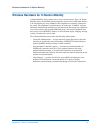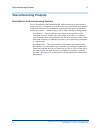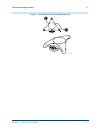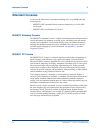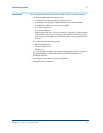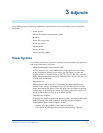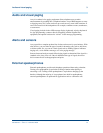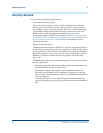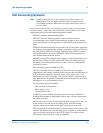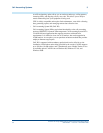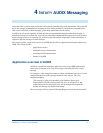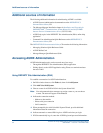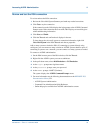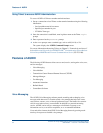
Audio and visual paging
27
Overview for Avaya IP600 Internet Protocol Communications Server
555-233-001 — Issue 5 — November 2000
3
Audio and visual paging
Avaya’s overhead voice paging equipment allows telephone users to make
announcements by speaking into a telephone handset. Avaya IP600 supports as many
as 9 paging zones, and 1 zone can be set up to activate every zone at the same time. A
zone is the location of the loudspeakers: for example, conference rooms, warehouses,
or storerooms.
Visual paging includes indoor LED message display signboards, wireless keyboards
for sign programming, connector kits for integrating with the PagePac Plus
equipment, and optional software for “ad-hoc” visual message programming.
Alerts and sensors
Avaya provides a complete product line of alerts and sensors for your business. With
alert devices, you can select the type of sound for incoming calls, such as bell, horn,
or chime sounds. Or, you can use visual signals such as flashing lights to indicate a
ringing call, a voice mailbox message, or a voice paging message.
Sensors detect and analyze central office ringing signals to determine if the signal is a
standard voice, data, or fax call. Once it determines the type of signal, the sensor
device routes the call to the appropriate end point.
External speakerphones
External speakerphones provide total telephone operation without using a handset.
Turning on a speakerphone is equivalent to lifting a handset when placing or
answering a call. Turning off the speakerphone is equivalent to hanging up the
handset. Although the majority of Avaya phones have built-in speakerphones,
external speakerphones are preferred for applications such as conference calls.



